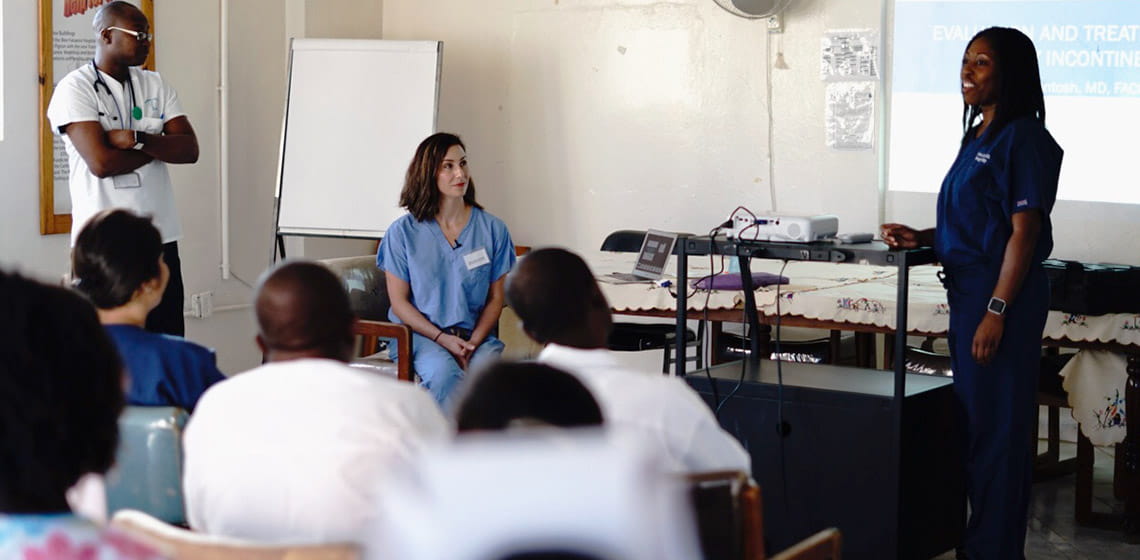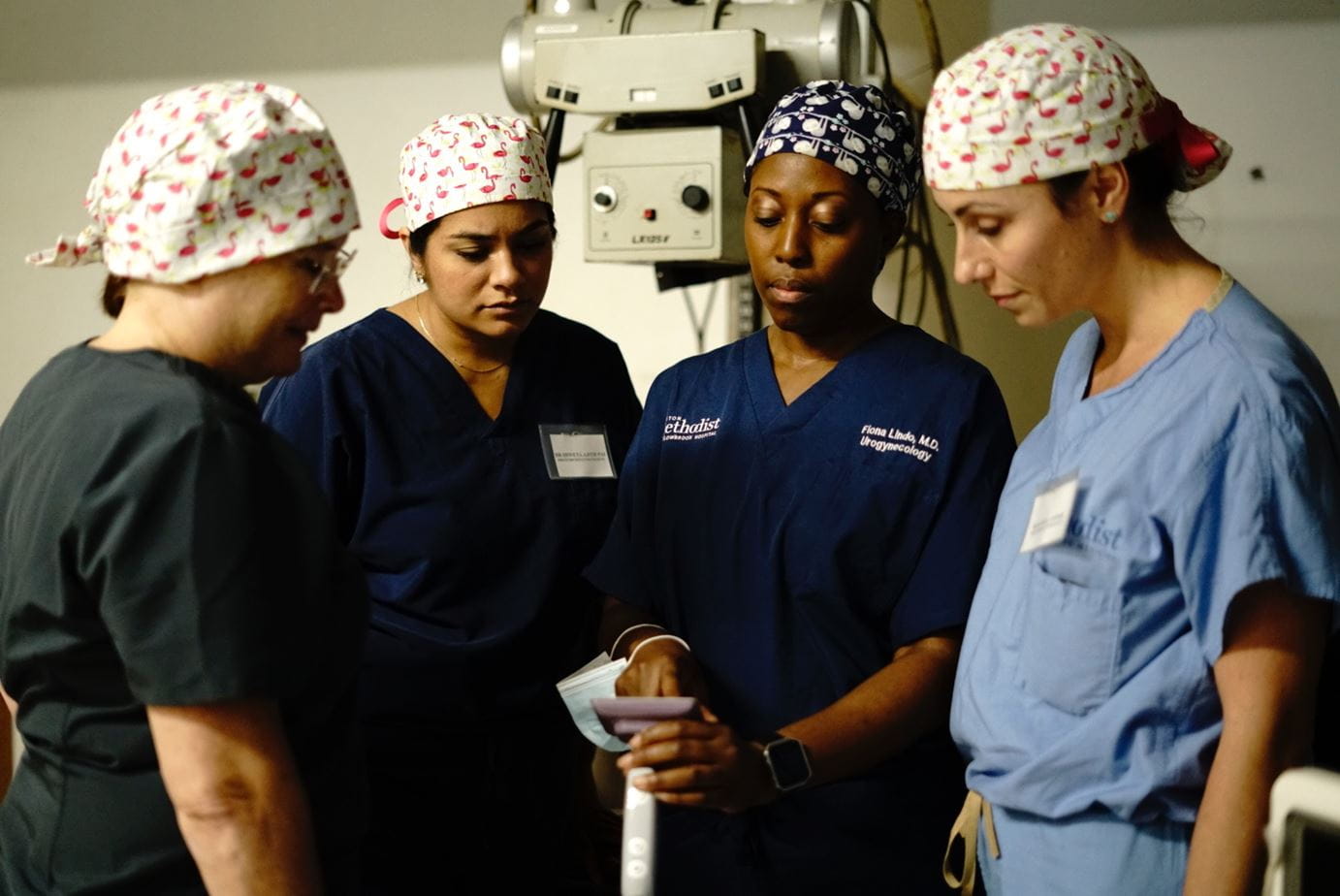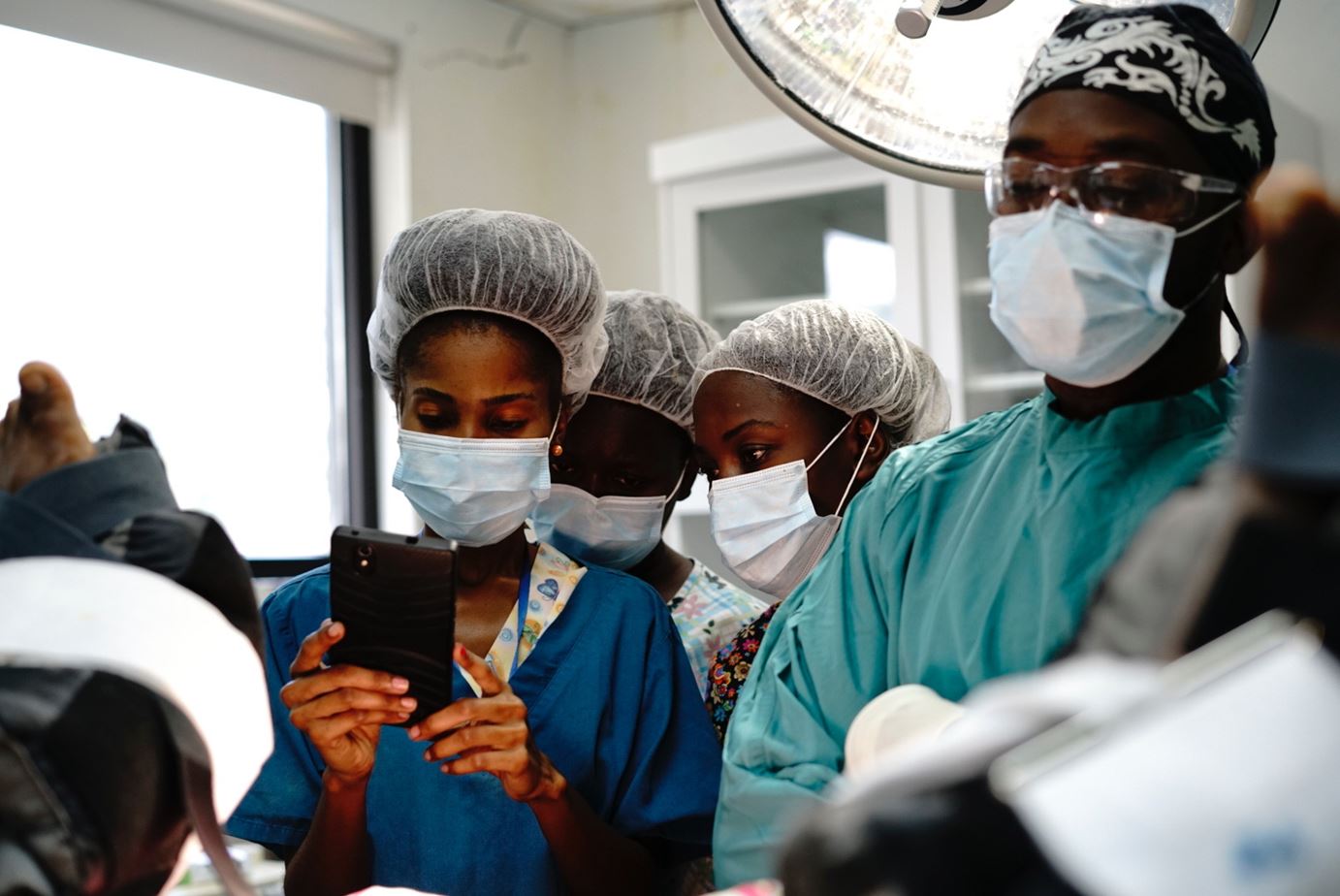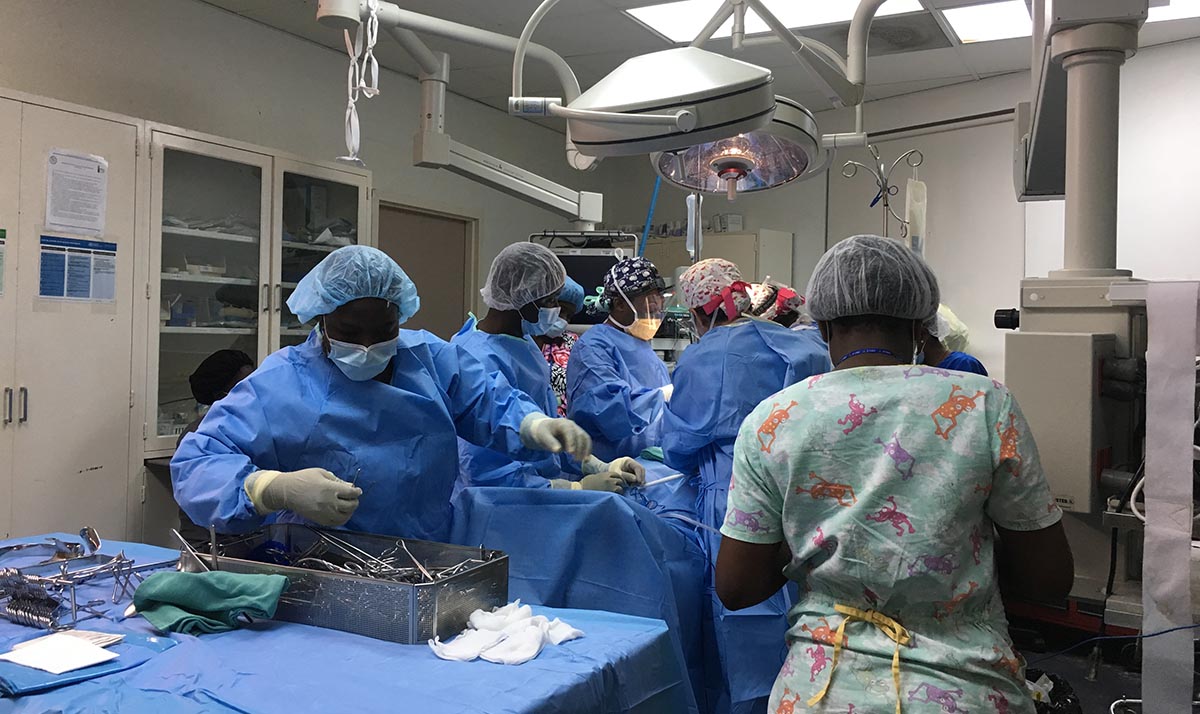Haiti: Day 3

Tuesday, October 30, 2018
Today, our work began with Dr. Danielle Antosh’s hour-long lecture on urinary incontinence with local doctors and medical residents from Port-au-Prince. Afterward, our doctors demonstrated use of an Endosee, a piece of equipment they brought with them to Haiti. The Endosee, a cordless, hand-held device, allows doctors to examine the uterine cavity. Antosh and Dr. Tristi Muir also demonstrated how to perform a urodynamics test — determining how well the bladder, sphincters and urethra store and release urine.
This afternoon, the team began operating on patients. During the first operation, our doctors removed a cyst. The last surgery began after 7 p.m. EST. and lasted into the night.
Daily Schedule
Besides offering surgeries to women, our mission includes educating local surgeons on performing these life-changing procedures so they can continue this work after we leave.
Today’s Schedule
- A morning lecture — topic: urinary incontinence
- Preoperation visits with patients
- Surgeries
- Patient rounds
- Case discussions with local doctors
Lecture Topic: Urinary Incontinence
Urinary Incontinence, or bladder control loss, can range from mild leakage to uncontrollable urine loss. Causes include:
- Aging
- Obesity
- Surgery involving the bladder or vagina in women
- Childbirth
- Medications
- Diabetes
- Some neurologic conditions
- Treatments include:
- Behavior modification
- Diet changes
- Botox injections
- Pessaries — devices you insert into your vagina to support and lessen stress on your bladder and other pelvic organs
- Pelvic floor physical therapy
- Medications
- Surgery
Day Three Photo Highlights
Dr. Tristi Muir, Dr. Shweta Pai and Dr. Danielle Antosh watch as Dr. Fiona Lindo demonstrates how to use an Endosee, a device that allows doctors to look inside the bladder.
Local doctors and staff look on as our doctors remove a patient's cyst.
Our doctors team up with local staff to perform Tuesday’s last surgery of the day.



